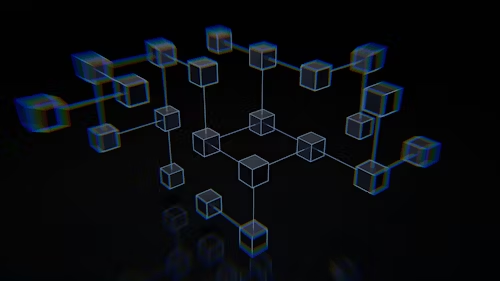
Using Blockchain technology has revolutionized how trust, transparency and decentralization is first thought of. Blockchain, in the shape of cryptocurrencies such as Bitcoin and Ethereum, decentralized applications (dApps) and smart contract is being used to restructure many industries across the world. This is the case, but as the technology develops, so do the challenges with respect to comfort, scalability, speed and cost. That is what brings Layer 1 and Layer 2 solutions into the equation. So Understanding Layer 1 and Layer 2 Solutions is very necessary. In this part of the blog post we will break down what these terms mean, how they differ from each other and why they matter in the blockchain ecosystem.
What is Layer 1 in Blockchain?
Layer 1 refers to the base layer of a blockchain network. The foundational protocol is the blockchain that defines the rules, the rules for consensus mechanism, and the core functionality of the blockchain. Examples of Layer 1 blockchain are Bitcoin, Ethereum, Solana, Cardano, and others.
Key Characteristics of Layer 1:
- Layer 1 blockchains use consensus mechanisms such as Proof of Work (PoW) or Proof of Stake (PoS) to validate transactions and secure the chain.
- Layer 1 blockchains are decentralized in nature, hence there is no common single entity controlling the network.
- Security: The first layer takes care of the security of the whole network: transactions are immutable and secure.
- Economic Concerns: The concerns in regards to the economics of an existing blockchain network tend to become problematic as the transaction cost & volume increase.
For instance, Layer 1 of Bitcoin is built for peer to peer transactions, where the Layer 1 of Ethereum supports smart contracts and dAPP. Nevertheless, each network has struggled to process high volumes of transactions.
What is Layer 2 in Blockchain?
Layer 2 is a reference to its secondary protocols or frameworks that are built upon a Layer 1 blockchain, to address its shortcomings; specifically, scalability and transaction speed. Layer 2 solutions offer an avenue to achieve the same performance that is not lost at the cost of security or decentralization.
Key Characteristics of Layer 2:
- Layer 2 solutions often process the transactions off-chain hence reducing the load on the main blockchain.
- Improved Great Scalability: The scalability is improved by offloading the transactions from the main chain.
- Layer 2 solutions are compatible with and secure to Layer 1 blockchains.
- Diverse methods: This is a very broad term that encompasses any Layer 2 solution that can exist either in the form of state channels, rollups or even sidechains.
Examples of Layer 2 Solutions:
- The Lightning Network is Bitcoin’s payment protocol for making fast, cheap transactions in off chain payment channels.
- Ethereum’s rollups: The rollup solutions include optimizing rollup, and zk rollup, which can batch multiple transactions into a single batch to decrease the loading on the mainnet of the Ethereum.
- Matic (now Polygon): A Layer 2 scale solution for Ethereum using side chains in order to increase transaction speed and decrease costs.
Layer 1 vs. Layer 2: Key Differences
| Aspect | Layer 1 | Layer 2 |
| Purpose | Base blockchain protocol | Scaling and performance enhancement |
| Transaction Speed | Slower due to on-chain processing | Faster due to off-chain processing |
| Scalability | Limited by blockchain design | High, designed to handle more transactions |
| Security | Highly secure (base layer) | Relies on Layer 1 for security |
| Examples | Bitcoin, Ethereum, Solana | Lightning Network, Rollups, Polygon |
Why Do Layer 1 and Layer 2 Solutions Matter?
- Scalability: With more enterprises trying to adopt blockchain, there is a necessity for faster networks with higher capacity so that they can explore its benefits. Layer 2 solutions make the gap between the current problems and demand side solutions closer.
- High transaction fees on Layer 1 blockchains can be costly, thus deterring a number of users from joining the network. Block chain technology is also made more affordable with layer 2 solutions as they reduce the costs associated.
- Faster transaction time and lower fees: A faster and less expensive process makes the whole user experience more friendly to push potential users of blockchain to consider the platforms, thus spreading the usage of the blockchain based applications.
- Innovation: Developers can test new use cases and applications with Layer 2 solutions without putting too much pressure on the base layer.
The Future of Layer 1 and Layer 2 Solutions
Layer 1 and Layer 2 solutions go hand in hand. Layer 2 solutions build on top of the base of Layer 1 blockchains, providing security and decentralization, thus they make Layer 1 more practical to use in everyday life. As the blockchain ecosystem evolves, expect more innovation in both layers, for example, the Ethereum 2.0 and Layer 2 technology advancement to work in tandem to provide a more scalable, efficient, and user experience blockchain in the future.
Conclusion
If you are interested in blockchain technology, it is very important to know what the difference is between Layer 1 and Layer 2 solutions. Layer 1 constitutes the main framework of the blockchain, and Layer 2 becomes a game changer to resolve the scalability and performance bottleneck. They collectively create the way of a more inclusive and efficient decentralized future. Whether you’re a developer, investor or just a blockchain enthusiast, it is essential to watch out for both the developments that happen in both these layers to keep a step ahead at this rate at which this space is progressing.
Read more
Want to learn more about cryptocurrency? Visit

